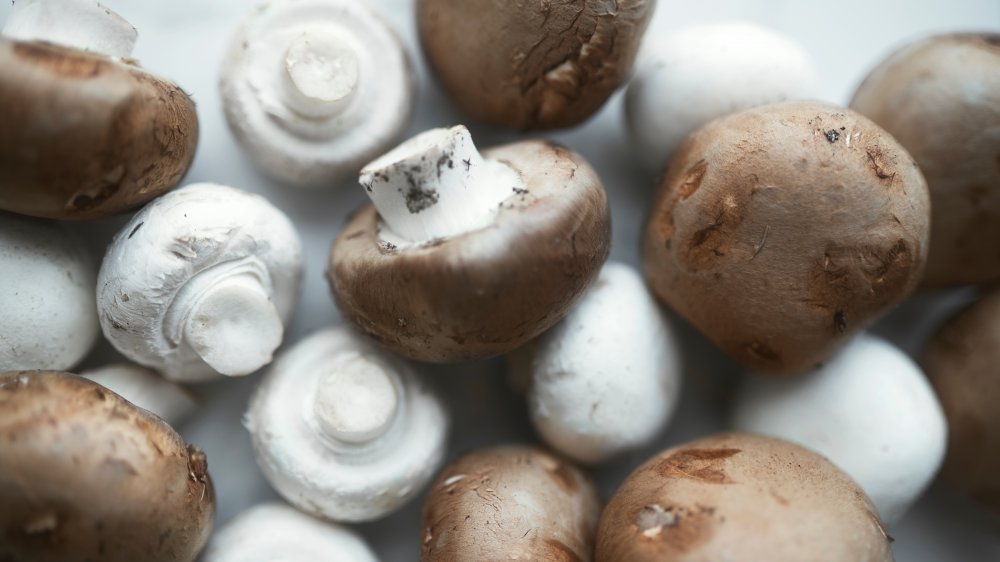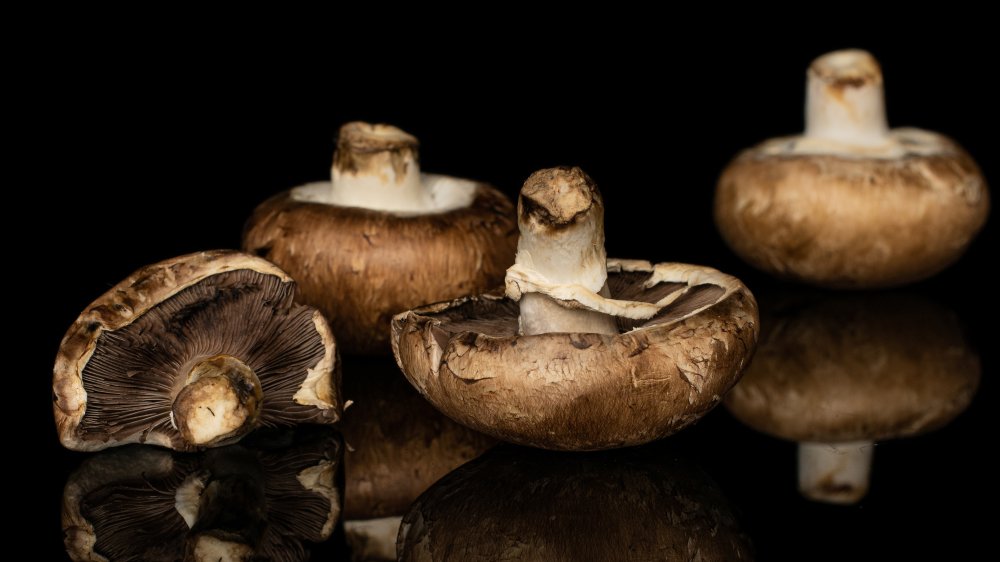What's The Difference Between White Mushrooms And Cremini Mushrooms?
You might think you're buying different mushrooms when you stand in the produce aisle trying to choose between white mushrooms, baby bellas and portabellas, but did you know these are all actually the same savory, delicious fungus? Both white (or "button") mushrooms and cremini (often labeled as "baby bella"), as well as portabella, are all the agaricus bisporus fungus. Agaricus are the most common mushroom crop in the world and account for about 97 percent of mushroom production in the U.S. (via Colorado State University).
The difference between these mushrooms lies solely in their age. The white mushroom is simply agaricus bisporus at its youngest stage, harvested at about three to four weeks' maturity (via Krishi Jagran). Grown in the wild, white mushrooms are actually a light brown color, but cultivated by growers, they have the bright white or off-white color you see in your local grocery store (via Reader's Digest). White button mushrooms are the most commonly consumed mushroom in the United states. They're the mildest in flavor, which makes them the most adaptable for many recipes.
Creminis and portabellas
Cremini (baby bella) mushrooms look similar to their less mature relative, the white or button mushroom. Like white mushrooms, cremini have a rounded cap, and the underlying gills are still covered and not visible (via Gro Cycle). (Tip: If a cremini is showing its gills, it's a sign it's no longer fresh.) Unlike buttons, the color of the cremini's cap ranges from a light brown to chestnut, although the interior color is white. Unlike smooth button mushrooms, the caps of creminis have a shaggy texture.
Portabellas are the oldest version of the agaricus bisporus. The longer agaricus bisporus grows, the flatter and wider their caps become, and the gills on the underside of the cap become visible. Portabellas can grow up to six inches in diameter. They are the most flavorful and meaty, which is why they're often used as meat substitutes, says Reader's Digest.
While agaricus bisporus becomes more flavorful, heartier, and more textured as it ages, what doesn't change is its nutritional value. All edible mushrooms contain B vitamins as well as the antioxidant selenium, which helps to support the immune system and prevents damage to cells and tissues (via BBC Good Food).

